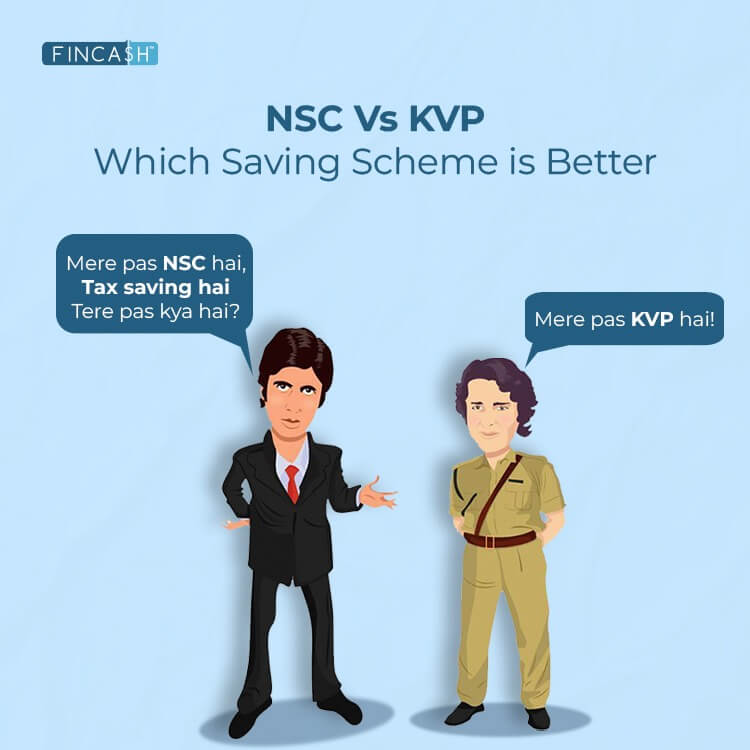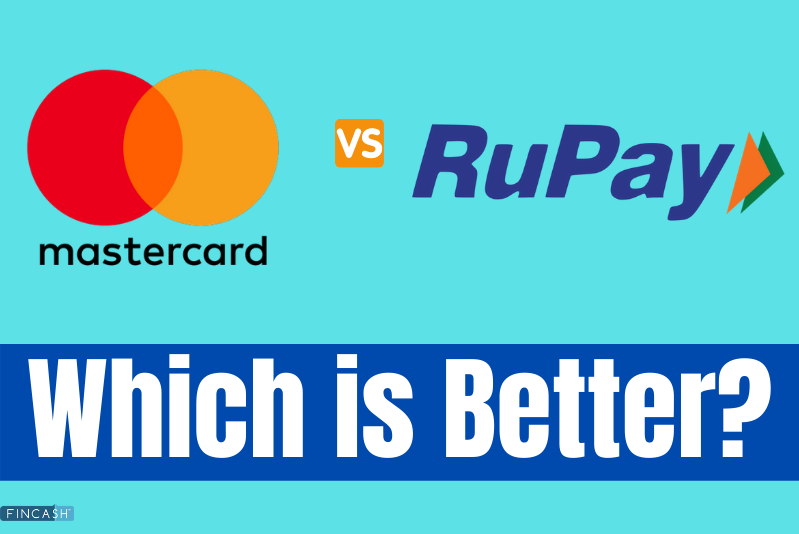NSC Vs KVP: Which Saving Scheme is Better?
Are you confused between NSC Vs KVP? Don’t know which one to choose. Don’t worry, this article will help you to guide with the same. Both NSC and KVP are schemes promoted by Government of India to help individuals save their money.

NSC, known as National Saving Certificate, is a savings instrument that offers the benefit of Investing as well as tax Deduction. On the contrary, Kisan Vikas Patra (KVP) does not offer benefits of tax deduction. Though both the schemes are promoted by the government yet, there exist several differences between them.
So, let us understand the differences between both NSC and KVP in terms of rate of interest, the tenure of investment, and other parameters.
National Savings Certificate (NSC)
National Savings Certificate is a fixed duration investment instrument. The Government of India launched NSC with an objective to raise money from the individuals of the country and channelize it towards the progress of the nation. It offers a Fixed Interest Rate on the investment.
Currently, the interest rate on NSC is
6.8% p.a.
The tenure of investment is 5 years, and individuals cannot withdraw their money during the tenure. Here, individuals receive the interest amount along with the interest at the end of the tenure. The minimum investment amount is as low as INR 100.
Here, the interest rate gets collected while being paid in addition to the principal during maturity. You can look forward to investing in the NSC scheme under a single name with no allowance for joint holding. However, the same can be bought by a minor or on behalf of the minor. You can purchase NSC through post offices in India.
NSC certificates can be easily transferred from one individual to another. However, as per the guidelines, during the transfer of the NSC certificate, older certificates will continue existing. During the process of transfer, just the name of the account holder is rounded. Moreover, the name of the new account holder is going to be written down in the old certificate with the help of dated signatures along with the Post Office’s date stamp.
Talk to our investment specialist
KVP or Kisan Vikas Patra
KVP or Kisan Vikas Patra is also a fixed duration investment instrument offered by the Government of India. It is issued in denominations of INR 1,000, INR 2,000, INR 5,000, and INR 10,000. The investment tenure is 118 Months however, individuals can withdraw the money after 30 months. Individuals cannot claim any tax deduction in this investment.
Currently, the interest rate on KVP investment is
6.9% p.a.
KVP certificates can be obtained by someone or on behalf of some minor. It can also be transferred from one individual to another. At the same time, the transfer can also be made from one post office to another.
Kisan Vikas Patra was launched in the year 1988, but was discontinued in the year 2011. This was based on a committee’s recommendation that there are chances that KVP can be used for money laundering purposes. However, it was re-introduced back in 2014.
NSC Vs KVP
Though both the schemes are promoted by the government yet; there are a lot of differences.
1. Minimum & Maximum Investment Amount
The minimum investment amount in case of NSC is INR 100. On the contrary, the minimum investment amount in case of KVP is INR 1,000. However, in case of maximum investment, there is no limit set for both the schemes. But, in KVP, individuals need to furnish a copy of PAN Card if the investment amount is above INR 50,000 and if the investment amount is about INR 10 Lakhs then they need to furnish documents showing the source of funds.
2. Interest Rate on NSC and KVP
The interest rates in case of NSC and KVP is determined by the government and it keeps on changing periodically. The current interest rates on NSC investment is 6.8% p.a. while; in case of KVP is 6.9% p.a. Individuals who have invested money in this prevalent interest rates will get the same interest rates till maturity.
For instance, if you invests today in NSC when the interest rates are 6.8%, then you'll get returns on the same percentage till maturity. However, the objective of KVP is to double the investment amount at the end of maturity tenure, which is not in the case of NSC.
3. Investment Tenure
The investment tenure in case of NSC is five years. However, in case of KVP, the investment tenure is 118 months which is approximately around nine years and eight months. Therefore, the investment tenure of KVP is long than NSC.
4. Premature Withdrawal
Individuals cannot do a premature withdrawal in case of NSC. They can redeem their investment only at maturity. On the other hand, in case of KVP, premature withdrawal is allowed. Individuals can withdraw their investment from KVP after 30 months.
5. Tax Deductions
Individuals can claim tax deductions in case of their NSC investments. Individuals can claim a deduction of up to INR 1,50,000 under Section 80C of income tax Act, 1961. However, the same cannot be claimed in case of KVP investments.
6. Loan
Individuals can claim loan against both NSC and KVP certificates. It can be pledged to the financial institutions to take a loan.
7. Eligibility
In case of NSC, only individuals who are a resident in India can purchase NSC. Trusts, hindu undivided family (HUFs), and Non-resident Individuals (NRIs) are not eligible to invest in NSC. However, with respect to KVP, individuals and trust both can invest in the scheme. However, HUFs and NRI also cannot invest in this instrument.
8. Channels of Purchasing NSC & KVP
Individuals can invest in NSC certificates only through post offices across India. However, in case of KVP, individuals can invest in its certificate either through post offices or through designated nationalized banks in India.
The various comparable parameters are summarized as follows.
| Parameters | NSC | KVP |
|---|---|---|
| Minimum Eligibility | INR 100 | INR 1,000 |
| Maximum Eligibility | No Limit | No Limit |
| Interest Rates | 6.8% | 6.9% |
| Investment Tenure | 5 Years | 118 Months |
| Premature Withdrawal | Not Applicable | Applicable after 30 Months from the date of Investment |
| Tax Deductions | Applicable | Not Applicable |
| Loan Facility | Applicable | Applicable |
| Eligibility | Only Resident Indian Individuals | Only Resident Indian Individuals and Trusts |
| Channels of Purchasing NSC & KVP | Only through the post office | Only through post office & designated nationalized banks |
Thus, from the above pointers, it can be said that both NSC and KVP have several differences between each other. However, it is advised to individuals to be careful while selecting the schemes to invest so that, they can attain their objectives easily.
In a Nut Shell
Though most of the conservative investors look for FD schemes, but many have started exploring alternative conservative schemes as well. For such investors, the post office small savings schemes are now Offering a higher return in comparison to the Bank FDs. Moreover, these saving schemes are regarded as safer investment options as they are backed by the Government of India.
All efforts have been made to ensure the information provided here is accurate. However, no guarantees are made regarding correctness of data. Please verify with scheme information document before making any investment.












Excellent informations
Good.it is a clear comparable information Thanks
Thanks.So helpful